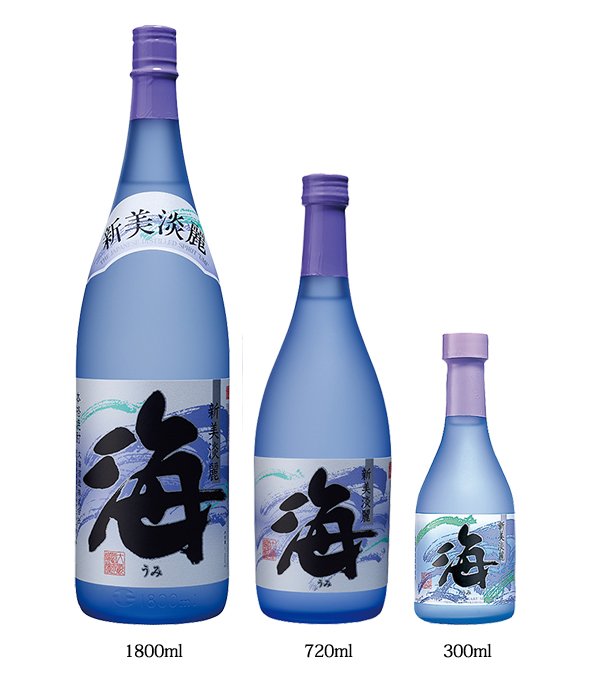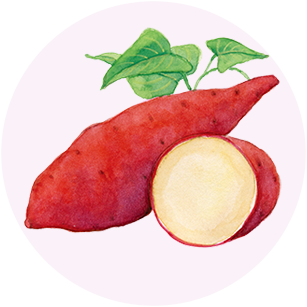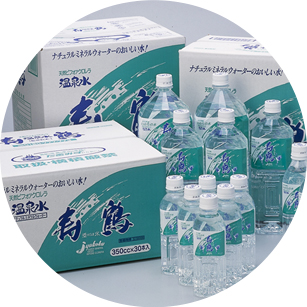Product Information
Sweet potato shōchū (standard)
Umi (kanji)(Sea)

The sweet potato shōchū we first recommend for beginners. It uses the same yellow kōji as nihonshū as well as the beni-otome sweet potato. The fermentation is done at a low temperature, and it is distilled through vacuum distillation. It has a gorgeous fruitiness and a refreshing taste. Ideal on the rocks, mixed with water or soda.
- Classification
- Authentic shōchū
- Alcohol volume
- 25%
- Ingredients
- Sweet potato (beni-otome), malted rice (produced in Japan)
- Kōji
- Yellow kōji
- Vacuum distillation
- Atmosphere distillation
- Bottle
- 1800ml/720ml/300ml
Related products
Umi15 (Sea15)
Umi15 (Sea15)
Aroma/Taste scale

Drinking temperature

For the best drinking experience
On the rocks, pre-distilled, mixed with 10°C water or soda.
Sweet potato
Beni-otome
Easy to grow even at home, it has a beautiful red color, a gentle and uniform spindle shape making it suitable for baking and other edible purposes. Its skin is red while the inside is yellowish-white. The cut ends produce a large amount of jalapin, a white resin-like substance. In 1990, beni-otome was designated as a Kagoshima recommended variety.
Water used
Jukaku hot spring water
Sakurajima is one of Japan’s most active volcanoes.Looking up to it, is the city of Tarumizu where jukaku water gushes forth from 800m underground. It contains 8.89ppb (parts per billion) of water-soluble germanium which is a hundred times more than the average.
Water-soluble germanium can also be found in plants such as ginseng, reishi mushrooms, polypores, or garlic and has been used for the longest time to maintain health. Natural alkaline ionized water, jukaku, is also rich in natural minerals and is known to have excellent penetrating and extracting power due to its unusually small molecular structure.

LinkJukaku Web site


































